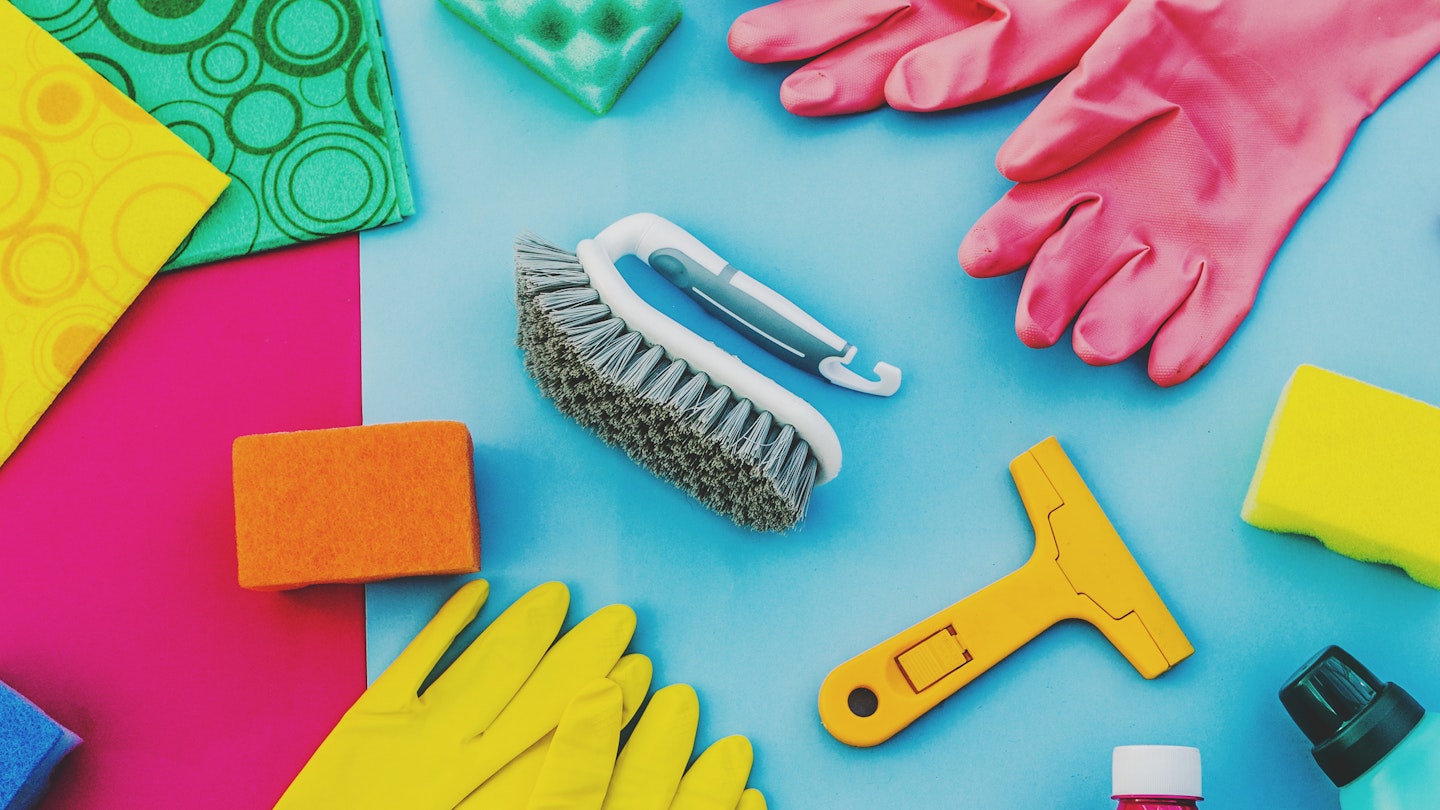Whether we're self-isolating or not, there's one thing that's made its way to the top of our to-lists thanks to coronavirus: cleaning our homes.
Though Covid-19 spreads through droplets (like mucus or saliva), we're also being told that transmission can happen by touching infected surfaces.
But short of dousing our homes in 20 bottles of Zoflora, many of us are questioning what 'deep-cleaning' actually means.
According to commercial cleaning company Twinkle Clean, 'deep cleaning is different from regular or spring cleaning because it reaches the deep grime and dirt in your home. It covers areas which aren’t traditionally covered by a regular or spring clean, for example, behind kitchen appliances like the washing machine and oven.'
Jason Tetro, AKA 'The Germ Guy' and author of The Germ Code and The Germ Files, backs this up. 'A deep clean is a two-step process that involves a manual clean, which scrubs all surfaces and equipment, followed by a decontamination process that properly disinfects every surface, such that there is no chance for spread of pathogens.'
He adds: 'The deep clean was designed to ensure that hard-to-kill pathogens, such as C. difficile and norovirus, were killed so there is no risk to the individual.'
According to information from Domestic Innovations and advice from Bella Middleton, founder of natural cleaning company Norfolk Natural Living, these are some top tips for deep-cleaning around the home.
Clean kitchen appliances
'A quick clean of your kitchen surfaces might involve wiping them down with some antibacterial spray; a deep clean would mean making sure you get underneath the toaster and the kettle,' says Bella. So, inside the fridge, the oven door, the stove – these are all places we often overlook during regular cleaning in the kitchen. If possible, pull heavy appliances away from the wall so you can clean the surrounding walls and the floor.
Wipe the shower door and shower curtain
Most shower curtains can be washed on a cold cycle, but check the label first. For the shower door, use a combination of heated distilled white wine vinegar to wipe it down, reapplying to keep them wet for half an hour. Then, scrub with baking soda sprinkled on a non-scratch pad.
Take down wall art
Pictures hanging on walls can collect a lot of dust. Once they're off the wall, clean the front and back using a damp micro fibre cloth. Be careful not to spray anything directly onto the glass as it could soak through and damage the photo.
Wash cushion covers
When was the last time you washed your cushion covers? Nope, we can't remember either. They'll come out spotless in the wash, but always check the label for washing instructions.
Hoover upholstery
If your hoover has the appropriate brush attachment, hoover over all upholstered surfaces, including the backs.
Don't forget door handles
'Door handles are one of what I call 'high-touch' surfaces which we often overlook when cleaning and disinfecting,' says Bella. 'The handle on your toilet is a great example of an area that you might want to put more conscious effort into cleaning. Other high-touch areas include the knobs on your cooker and the remote control'.
READ MORE: Your Guide To What To Freeze, Stock Up On And Batch Cook For Self-Isolation From The Batch Lady
